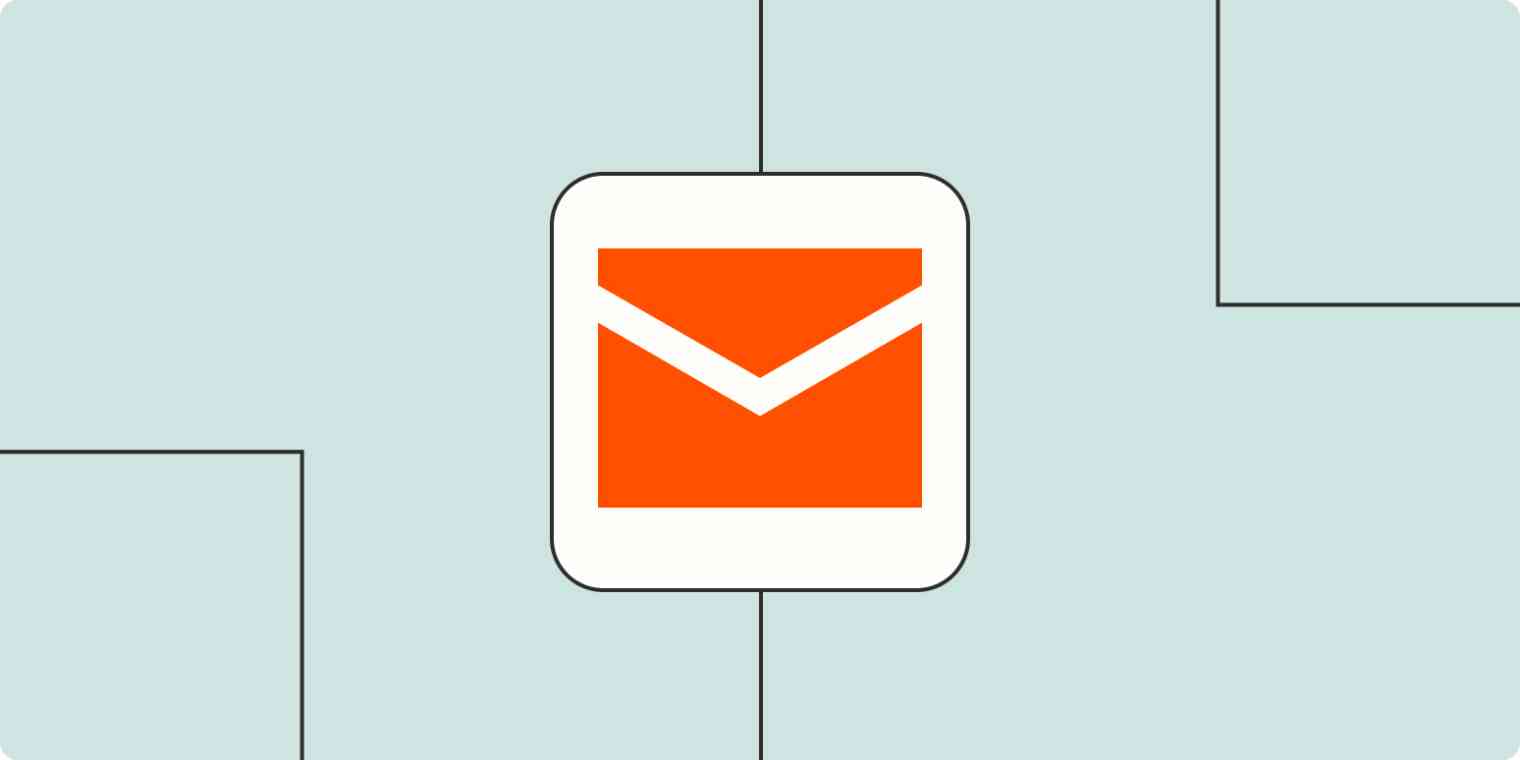Like many people, I'm a habitual email unsubscriber. I really, really do not like promotional emails clogging up my inbox, so I've become good friends with the "Unsubscribe" button.
Every now and then, however, I get a drip email that's good enough to make me stay subscribed. From subject lines to CTAs, these emails are sharp, different, timely—and even a wee bit entertaining.
Timely intro from Peloton
Achievement notice from Acorns
Product teaser from Arc
Audience-appropriate humor from Reformation
Onboarding from nkoda
Weekly roundup from Clockwise
Trend preview from & Other Stories
Birthday reward from Starbucks
Curated content from American Express
What is a drip campaign?
Before we look at a few examples, it's important to understand what a drip campaign is. Simply put, it's a series of emails that trickle (or "drip") into a customer's or lead's inbox. These emails can be triggered by an event, like signing up for your business's newsletter, or sent at different intervals, like one week after a customer makes a purchase.
Drip emails can have different goals. For example, if you're running an eCommerce business, you might use a drip campaign to remind potential customers that they left an item in their cart without checking out. Or if you sell digital products like apps, you might use drip emails to foster better product engagement among new users. You can even use drip emails to build brand loyalty by offering discount codes, birthday treats, and other rewards.
Learn more in Zapier's guide to drip marketing.
9 drip email campaign examples to inspire your next campaign
As you look through these examples, you might notice a few commonalities. For one, all of these emails are astonishingly creative—whether they have good photography, great copy, or a mix of both.
They're also to-the-point; they don't waste time with irrelevant content.
Most importantly, they're all on brand. You get a clear sense of the business behind each email—not just what they sell, but who they are and what they value.
1. A timely intro email (Peloton)
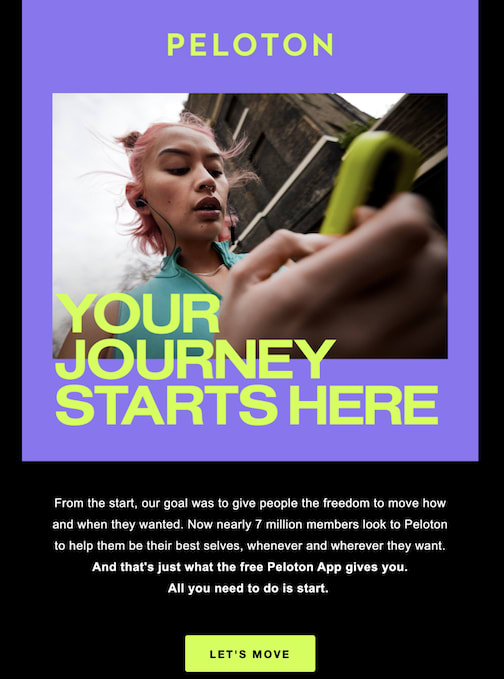
I recently caved and purchased a Peloton bike, because I live somewhere where the cold and dark completely destroy any motivation you might otherwise have to leave the house and go to the gym.
The problem with a Peloton, though, is that you can't actually start working out until the bike arrives—or so I thought.
The very first email Peloton sends (besides your order confirmation) is an invitation to start using their app, which is full of workouts that don't need any equipment, like yoga, strength training, and outdoor runs. It's a clever way to foster immediate engagement with the product and the brand, and the copy absolutely nails an accepting, beginner-friendly tone: "All you have to do is start."
2. An awesome achievement email (Acorns)
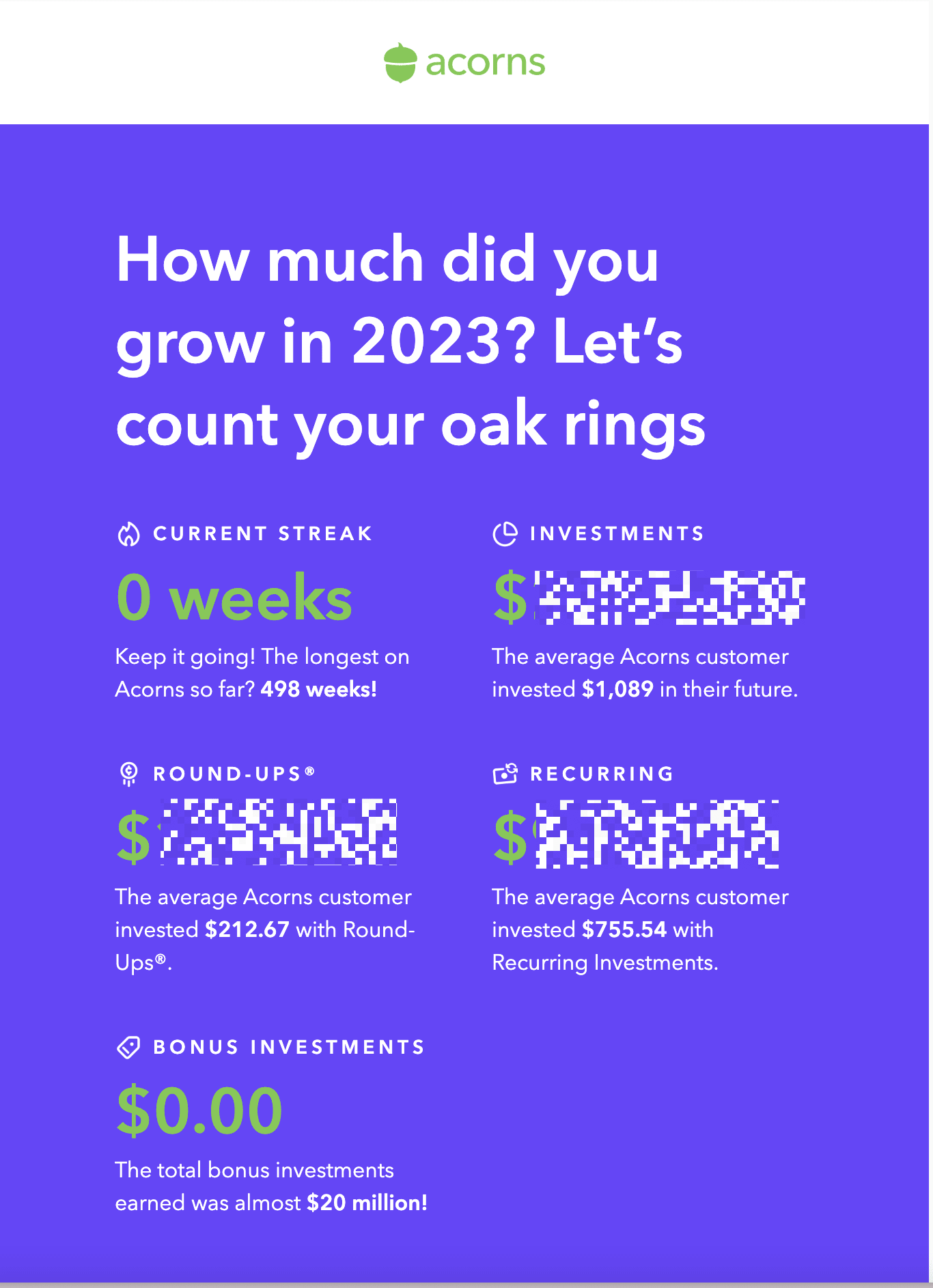
End-of-year wrapup campaigns are a dime a dozen—and let's be honest, no one does it better than Spotify. But this year, Acorns surprised me.
Acorns is an investing app that invests your "loose change" by rounding up purchases made with a debit or credit card to the nearest whole dollar number. They're a very in-the-background kind of app, meaning users might set it up and then totally forget about it. And that's on purpose; they aim to make investing easy, especially for financial beginners. But it's also a double-edged sword when it comes to product engagement—it's so easy to forget about, user engagement might stay really low.
That's one reason their end-of-year email works so well—it's a reminder of the financial progress you've been making. But the secret to this email is really in the additional copy underneath each personalized stat, where you can see what the user average is. With investing in particular, it's easy to feel like you're not doing enough—but seeing the averages is a great way to congratulate users on their personal achievements while still inspiring them to invest more.
3. A mysterious product teaser (Arc)
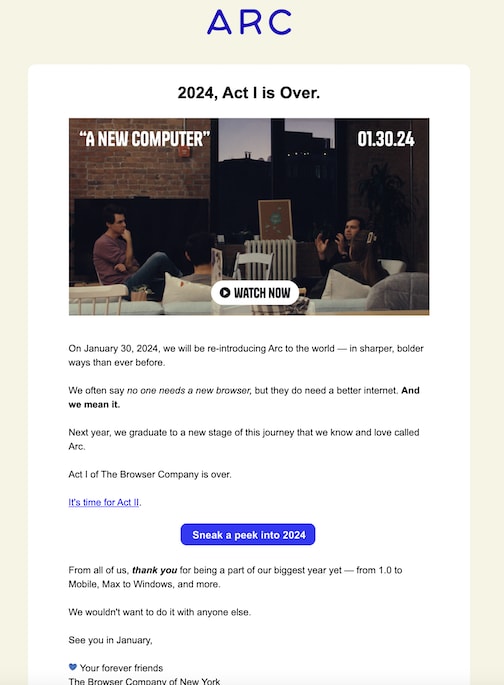
A while back, I switched to Arc as my primary browser. It's a radically different way of browsing the web and, while not for everyone, has quite a few features that make my work easier (like the ability to have two tabs open side-by-side in the same window).
I've stayed subscribed to Arc's drip emails because I'm still getting used to their product—but also because they're incredibly engaging.
Take this email, for example. At first glance, this might seem like just another year-end roundup. Look more closely, however, and you'll notice that it's actually teasing a new product.
Even better, the email doesn't settle for the familiar cadence of a product announcement (We have something new and improved, blah blah blah). Instead, it cuts right to the reason folks choose Arc in the first place: so much of online—both its content and how we explore it—is terrible. People don't just need a new browser; they need a new internet. In an age where the internet is riddled with scams small and large, that's a timely message that's just provocative enough to excite users about Arc's upcoming release.
Even though it's part of an ongoing series of emails about product updates (which, let's be honest, can sometimes feel dull), I'm paying attention.
4. Audience-appropriate humor (Reformation)

Ok, this one isn't a full email, but it's a great example of why strong subject lines—and knowing your audience—matter.
Reformation is a retail brand known for its dresses. A couple years ago, I bought a nap dress from them (yes, it's as comfy as it sounds and no, I'm not sponsored by the brand) and signed up for their drip emails in order to receive a discount on that purchase.
And oh boy, did they ever deliver.
A perennial problem in email marketing is: How do you keep engaging buyers after they've already bought what they were looking for? They already have what they came for, so how do you add value?
Reformation's answer is to be entertaining right off the bat, in a way that resonates with their specific audience. The "PAUSE LOVE ISLAND" subject line especially made me howl with laughter—what could be worth pausing my favorite TV show to check out? They really came prepared to engage their core audience of 30-something women who love reality TV.
5. A useful onboarding email (nkoda)
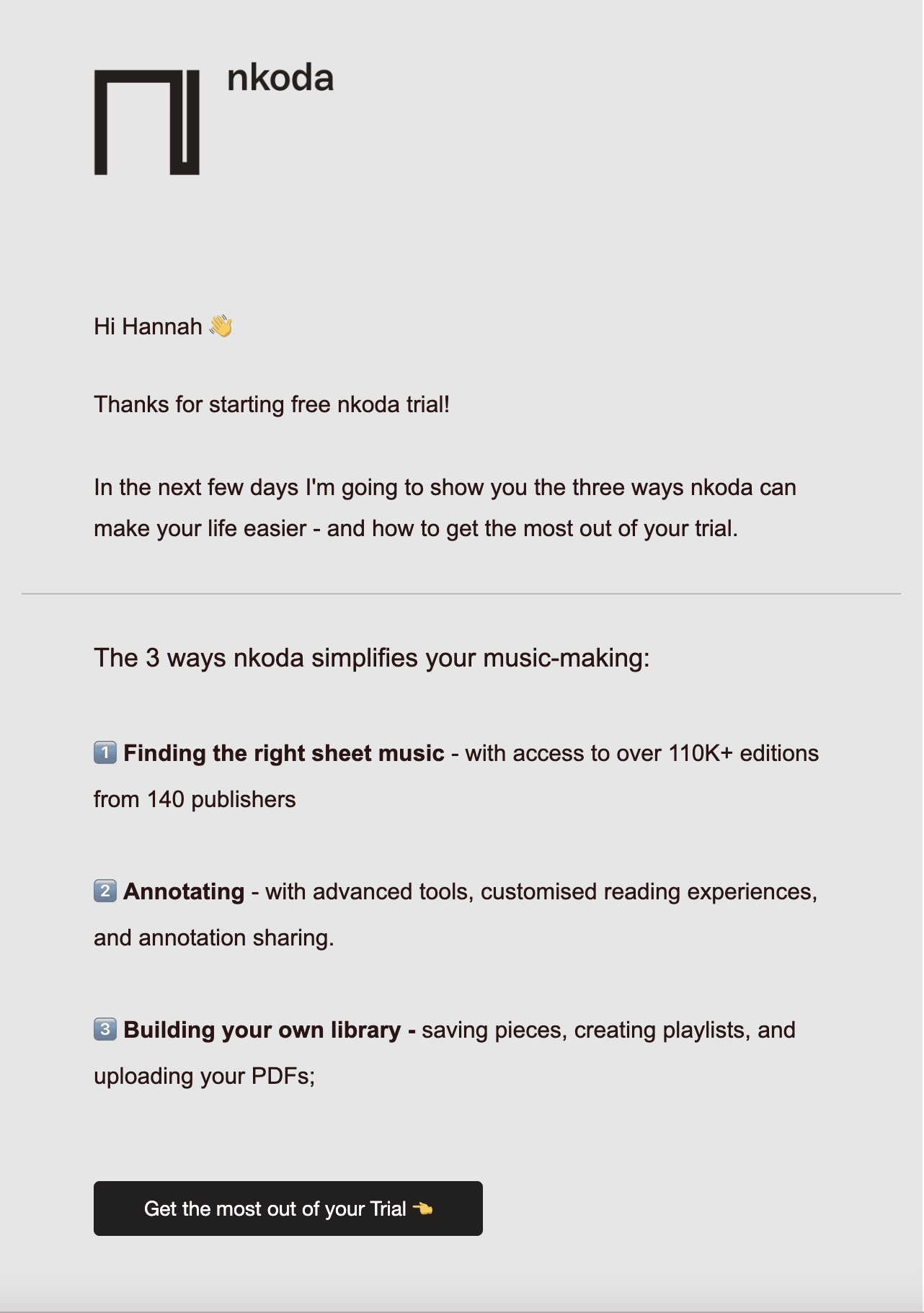
At best, signup emails are usually boring. At worst, they're confusing and leave you with no new knowledge of a brand or product.
That's why I love this drip email from nkoda, a sheet music app, that triggers when you sign up for an account. It lays out what you can expect from their onboarding emails—so you have a clear understanding of ways to use the app to solve your everyday problems.
6. A weekly roundup (Clockwise)
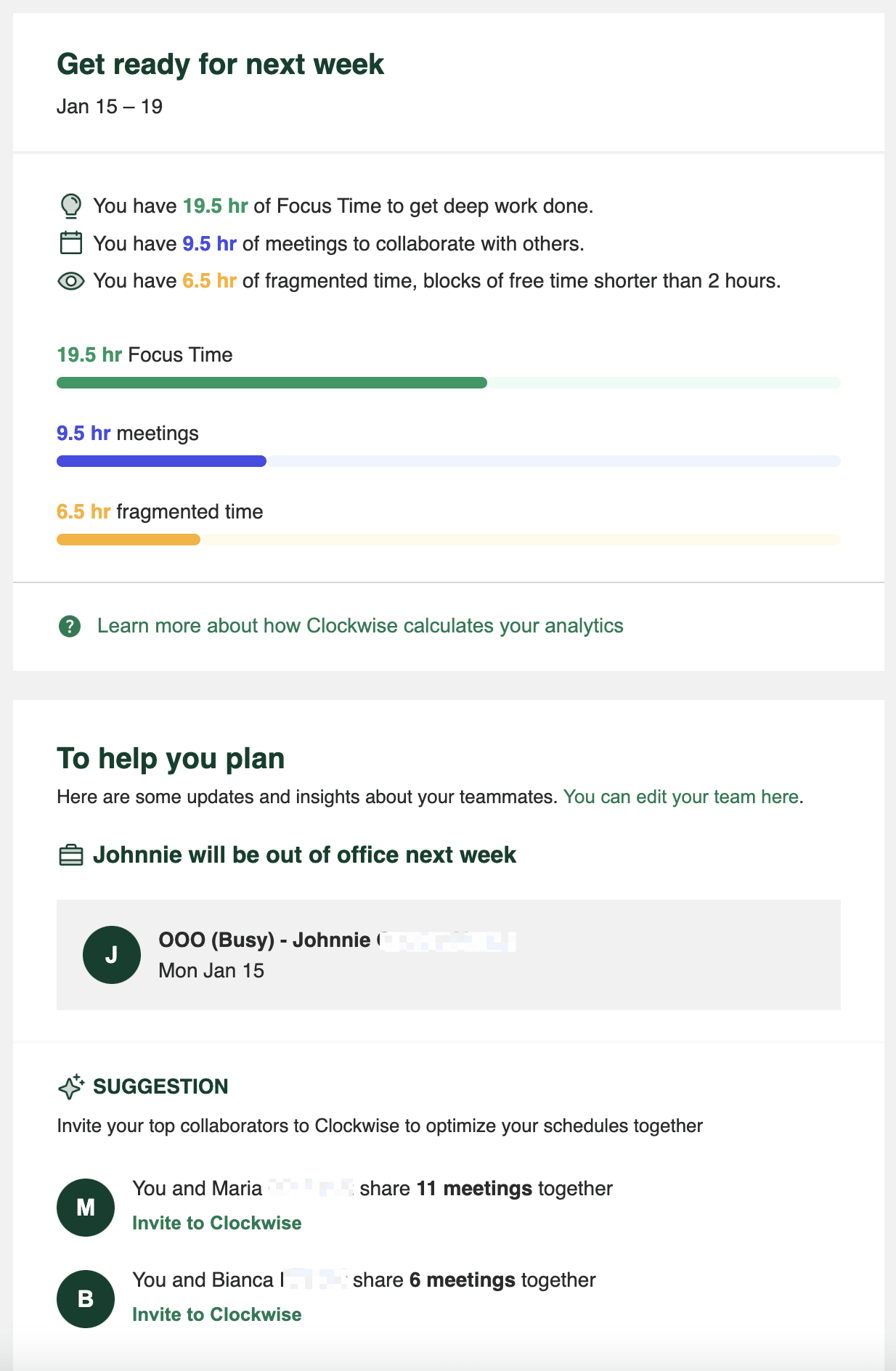
As a manager who's also responsible for doing actual creative work, my calendar can be a nightmare. That's why I use Clockwise, a calendar add-on that optimizes your schedule for you—and it's a total lifesaver.
One of the greatest aspects of Clockwise is its weekly drip email. Instead of just bombarding you with tips about using the product or purely retrospective stats, these emails offer meaningful insights into the upcoming week.
I love that I can see the exact breakdown of the next few days, like how much time I'll spend in meetings, what my free time looks like—even which colleagues I'll be working with the most. Not only is that valuable info, but it taps into a common emotion about work: anxiety for the week ahead, AKA the Sunday Scaries.
7. A trend preview (& Other Stories)
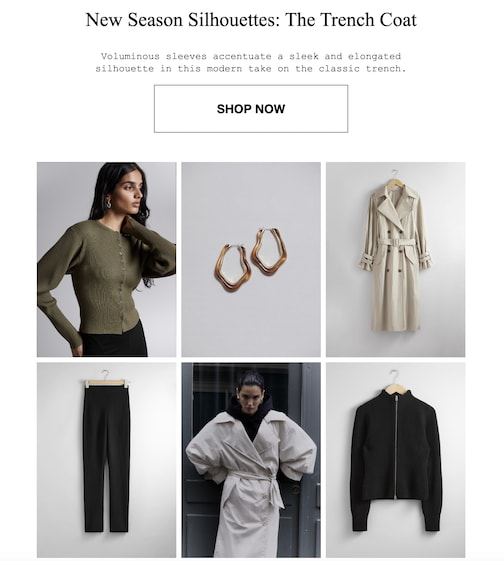
Retail is one industry where drip emails can really miss the mark—either they're advertising something you've already purchased, or they're showing you stuff you just don't want.
That's why I love this email from clothing brand & Other Stories. Its trend-focused content is aimed at the brand's core consumer: fashion-conscious buyers who are likely to purchase fresh pieces for every season. Plus, it highlights multiple items that pair well together, including a pair of earrings—so even if a customer isn't ready to drop $$$$ on the centerpiece trench coat, they still have a path to a smaller purchase.
8. A birthday reward (Starbucks)
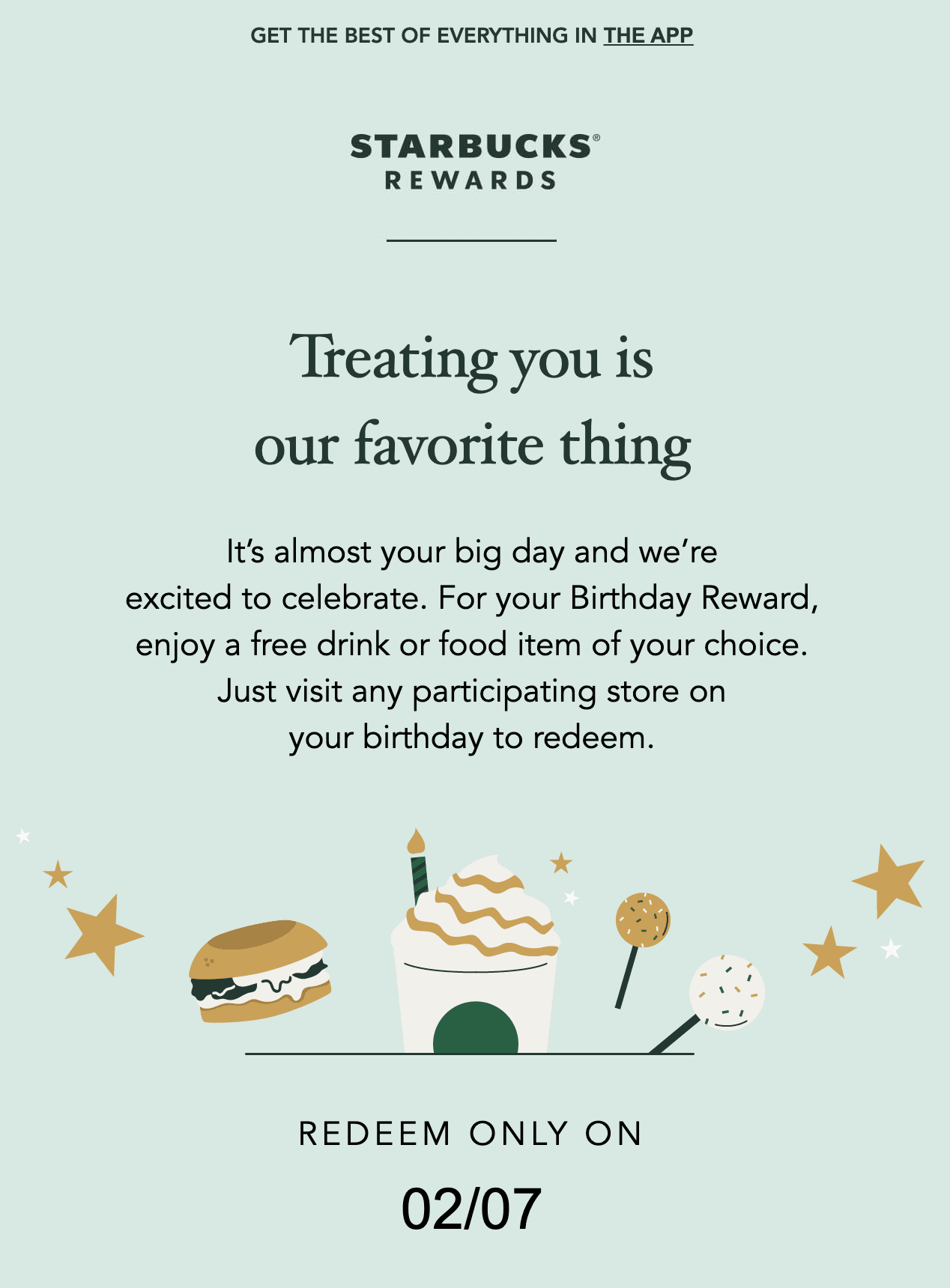
Everyone loves free stuff, but this drip email from Starbucks is so much more than just a freebie.
From the subject line to the content inside, Starbucks uses a friendly, almost intimate tone to make you feel all warm and fuzzy inside—like you're getting a gift from a real friend, not just a free coffee from the world's third-largest fast food chain.
![The subject line of the Starbucks email: "Open on you birthday [present emoji] (Actually, you can open now)](https://res.cloudinary.com/zapier-media/image/upload/f_auto/q_auto/v1707320665/Blog/email-drip-campaign-examples/email-drip-campaign-examples-image7_vzafct.png?)
They also create a good kind of urgency and exclusivity: the email is sent out two days before your birthday, and you can only claim your free drink on your actual birthdate, so you need to take action soon or you'll miss out.
9. Curated content (American Express)
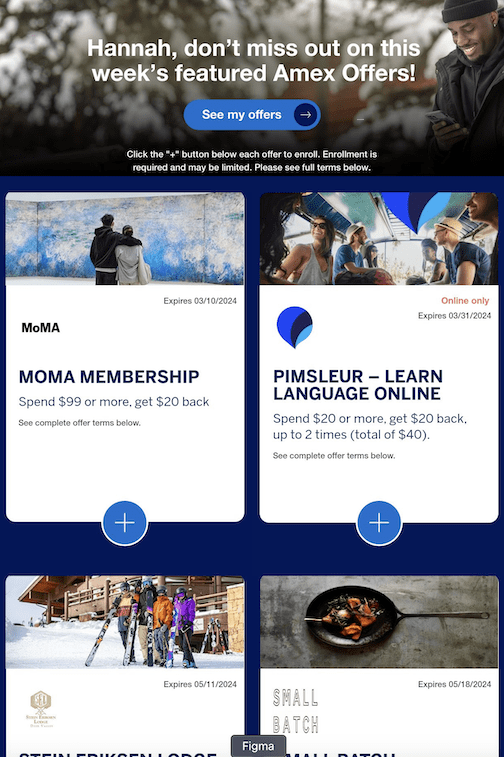
Every week, American Express sends me an email with a bunch of exclusive deals that I can access as a cardholder. Normally, I hate emails like this—they tend to be the internet equivalent of those terrible coupon packs that every American household got in their mailbox in the '90s. Just absolute junk.
But Amex's emails are so on brand: they emphasize discounts at cultural institutions, restaurants, and travel-related services—things I'd actually want to do (or, if I can't afford to right now, that I aspire to do someday). Not every business has the clout to organize museum discounts for its customers, but the point is that the offers feel high-quality and curated to my current and future tastes.
Know your audience and nail your drip campaigns
These examples have one thing in common: they all demonstrate a keen understanding of who's reading the email. They go above and beyond to meet the reader where they are, whether that's with actionable tips for using a product or cheeky subject lines that make the reader laugh.
Related reading:
